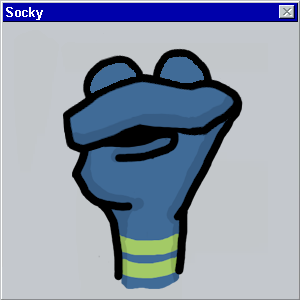Listenin' to the oldies.
December 30, 2011 3:24 AM Subscribe
Phonozoic, Patrick Feaster's website "dedicated to the history of the phonograph and related media," is an amazing collection of information about historic recordings. Not just early recordings, however, but also experimental "eduction projects": the "automatic 'playing' of primeval inscriptions of sound."
You may recall the previous MeFi discussions of the 1860 phonautograph "recording" (here and here) of a voice singing "Au Clair de la Lune." But these are not the only printed inscriptions that Feaster has been able to recreate. Through a technique he calls "paleospectrophony," he uses software to play many old inscriptions, from an African-American spiritual in 1929, to an organ piece from the 1600s (which looks oddly like a player piano roll), to "the oldest automatically 'playable' representations of American speech."
Even further back in time, paleospectrophonic analysis can play inscriptions from medieval manuscripts.
There is much, much more fascinating phonographic history to be found on Phonozoic. Perhaps you would like to enjoy an evening of 1907 entertainment, as suggested in an Edison Phonograph ad. Or perhaps you are interested in phonograph patents from 1913-1919, or the labels of home recording discs. Then there's the three-part amateur recording from the 1950s, The Monster by the Boys, about which Feaster says "If Ed Wood of Plan 9 From Outer Space had tried his hand at radio drama, it might have come out something like this."
Want to build your own phonograph with instructions from 1878? One Phonozoic reader did.
If that doesn't do it for you, there are links to just about every historic sound recording website out there.
You may recall the previous MeFi discussions of the 1860 phonautograph "recording" (here and here) of a voice singing "Au Clair de la Lune." But these are not the only printed inscriptions that Feaster has been able to recreate. Through a technique he calls "paleospectrophony," he uses software to play many old inscriptions, from an African-American spiritual in 1929, to an organ piece from the 1600s (which looks oddly like a player piano roll), to "the oldest automatically 'playable' representations of American speech."
Even further back in time, paleospectrophonic analysis can play inscriptions from medieval manuscripts.
There is much, much more fascinating phonographic history to be found on Phonozoic. Perhaps you would like to enjoy an evening of 1907 entertainment, as suggested in an Edison Phonograph ad. Or perhaps you are interested in phonograph patents from 1913-1919, or the labels of home recording discs. Then there's the three-part amateur recording from the 1950s, The Monster by the Boys, about which Feaster says "If Ed Wood of Plan 9 From Outer Space had tried his hand at radio drama, it might have come out something like this."
Want to build your own phonograph with instructions from 1878? One Phonozoic reader did.
If that doesn't do it for you, there are links to just about every historic sound recording website out there.
« Older Social conservative senator polling well. | star light star bright meow Newer »
This thread has been archived and is closed to new comments


posted by troll at 12:08 PM on December 30, 2011